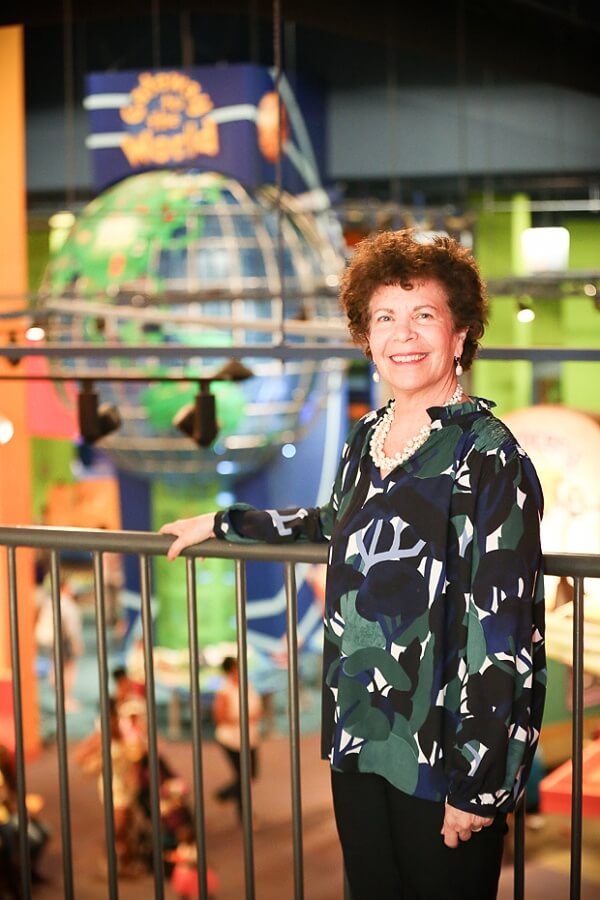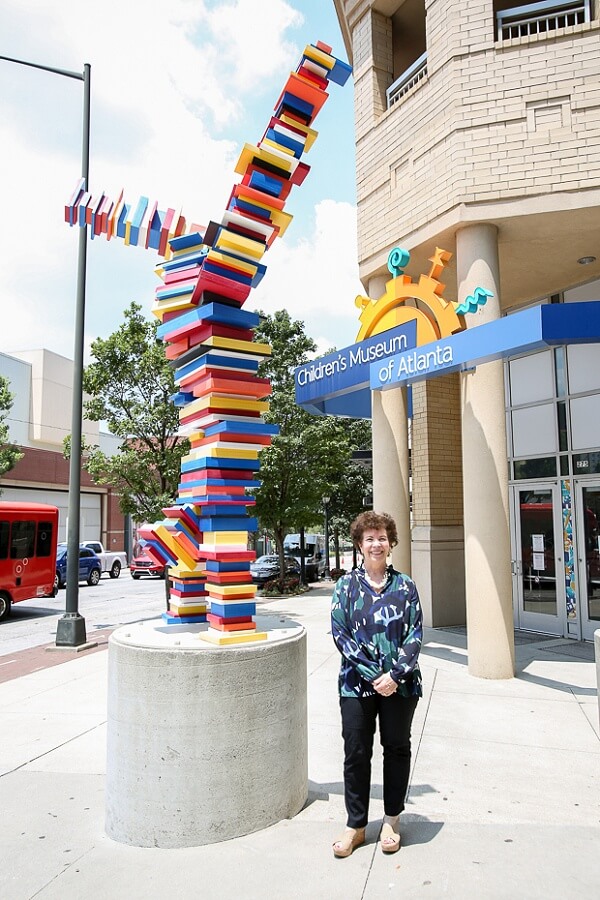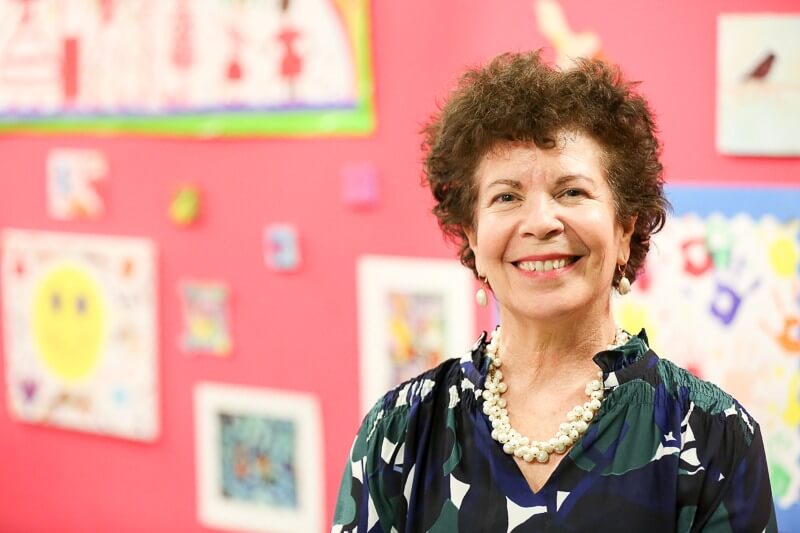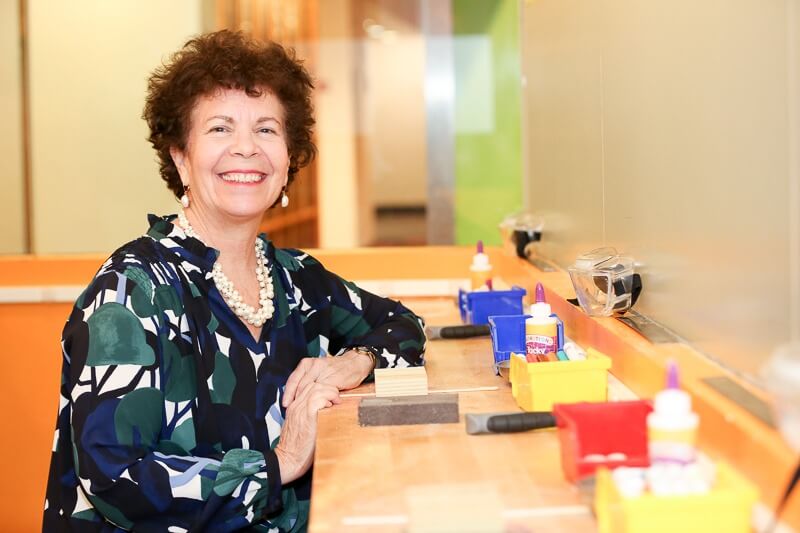According to reports from The Nonprofit Times, Huffington Post and other news outlets, America is running low on volunteers. While many people participate in a service project once a year, very few are lending regular support to organizations that need it the most. But then there are people like Jane Turner, who, after volunteering on the board of an Atlanta-area theater nonprofit, took the leap and joined the Children’s Museum of Atlanta as the organization’s full-time executive director. It’s a far cry from her former gig in the corporate world, but she wouldn’t have it any other way — and she wants others to reap the rewards of philanthropic service. Here, Turner shares her path from boardrooms to volunteer boards and offers advice to readers who want to get more involved in their local communities. Welcome Jane Turner as our FACE of Atlanta!

How did you end up at the Children’s Museum?
I moved to Atlanta in 1992 from Washington D.C., and I had been working for years at a computer-oriented company, which is completely not related to children’s museums. So when we moved here, I had just had our first child, and I took some time off. I then got involved on a voluntary basis with a local theater here during the Shakespeare festival. I was a volunteer and ended up as president of their board, so I really got immersed in the community spirit that revolves around arts and culture. And, really, that took me on a completely different path than I had been on.
So when I was ready to return to the work world, the Children’s Museum here had recently opened, and they were looking for an interim director. I filled the position, and we all fell madly in love. I fell in love with the place, and the mission, and the work and the people. And I just never looked back.
Were you nervous about making the jump from the corporate world to the nonprofit space?
Actually, no. In fact, I think it helped me in a lot of ways. I got a real understanding of the nonprofit world just through my time on the board with Georgia Shakespeare, and I thought that bringing a business background would be helpful.

You’ve been at the Children’s Museum since 2004 — long enough to see the economy crash and rebound, as well as to see significant changes in technology. So what have been your biggest challenges along the way?
When I first came, there were some significant challenges to keep us in our location. We were in Centennial Olympic Park, and it wasn’t developed yet. There was no Georgia Aquarium or World of Coke. So part of our challenge was making sure people were comfortable coming downtown with young children, and there’s an economic challenge around that, as you’re building programs and finding your deeper reasons for existing in a community. There was also an investment that needed to happen at the same time we were up against those challenges, but that’s true anytime.
So what we have found is that facing challenges has forced us to be extremely creative and very focused. You can’t just go out and try a bunch of stuff. You really have to know and embrace your mission, who you’re trying to reach, and why you’re trying to reach them. And then you have to really look at how you can fulfill that in a way that works financially. So I would say that, in some strange way, we operate best when we come up against certain challenges.

What are some of the creative risks that you’ve taken at the museum that have netted the biggest rewards?
Well, since you can’t change exhibits every 10 minutes, we do bring in traveling exhibits every three months, and that introduces a new experience [to our patrons]. So in 2007, we started bringing a theater experience to the museum that was linked to the traveling exhibits, thematically. And we hired, on a part-time basis, professional actors, musicians and dancers from Atlanta. It was risky because it’s money you’re spending that doesn’t necessarily have a return, but we never looked back.
It has since enhanced the experience for visitors and brought the exhibits to life. We’re able to connect the learning aspect to an original performance that the kids can engage in. And having the actors leading the programming brings it to life in a way that is very dynamic.
The other thing we did was ask was, “How do we make sure that all kids have access to this museum?” Basically, we identified those populations or groups that were not able to come here because of financial constraints, or physical or cognitive constraints, and we have systematically gone about eliminating those barriers. When we’ve had programs with free admission, we have very extensive neighborhood outreach programs. And it’s just become an important part of what we are.
And last but not least, we embarked on a capital campaign. We jokingly say we had 2 million people come to the museum that we invited to destroy the property, so we’ve really reinvented this place. It’s wonderful, and the results have been spectacular. But it’s pretty scary, too. We took it down to the concrete, so you’re watching everything be torn apart, and you’re going, “Well, we have to keep going.”
Why do you think it’s important for people to get involved in their local communities?
When you give of yourself, you establish a connection to the community that’s really important. And it benefits not only the community and the specific place that you are serving, but you reap the rewards in a number of ways. You also meet people who are like-minded, and it really expands your network — not just professionally but personally. I know that just from working here and encountering all the different people who volunteer here.
For readers who would like to start volunteering more, what advice do you have to help them get started?
I would do what I did, which is find something that you love and care about. In my case, it was the Georgia Shakespeare Festival, and I loved working there. So you look inside yourself and say, “What am I interested in?” And then you just connect. Any nonprofit will happily welcome volunteers who really want to participate. It’s just taking the step and picking up the phone to ask what you can do. Usually a nonprofit will have someone who is focused on organizing volunteers, or you can look on the website and find out.
Aside from faith, family and friends, what are three things you can’t live without?
Coffee. I’ve got to have it first thing in the morning. And Skype. My kids are literally all over the world, and Skype is a fabulous thing that I love. And then — this may fall in the “friends” category — my book group. It’s a monthly themed gathering with some long-time book lovers, and it’s all about books and connecting and really diving into those books.
Thank you Jane, and thank you to Catrina Maxwell of CatMax Photography for the fantastic photos of Jane at the Children’s Museum.
Meet more inspiring women of Atlanta — CLICK HERE!






















